Introduction
Protein is fundamental to human health. It repairs tissues, supports immune defenses, forms enzymes and hormones, helps maintain muscle mass, and keeps us feeling full. Including good high-protein foods in your daily meals helps with recovery, weight control, satiety, strength, and metabolic health. But not all protein sources are created equal — quality, digestibility, accompanying nutrients, and culinary practicality all matter.
This article gives you a carefully organized, evidence-based, user-friendly guide to the top high-protein foods, meal ideas, portion tricks, vegetarian/vegan strategies, safety considerations, and FAQs. Use this as a roadmap: see what aligns with your tastes, health needs, and lifestyle.
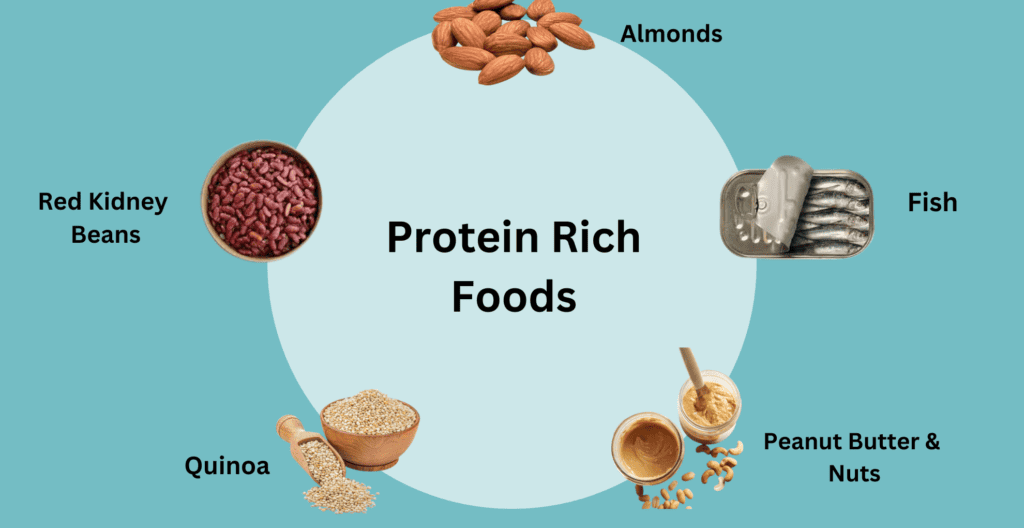
What Counts as “High Protein”?
A “high-protein” food offers a strong ratio of grams of protein compared to its calorie or serving size. For example, lean meats, fish, eggs, dairy, legumes, soy, nuts and seeds tend to be protein-dense. Packaged foods are variable—check nutrition labels and pick options that maximize protein with minimal added sugar, sodium, or unhealthy fat. The more protein per 100 kcal or per serving, the more “efficient” the food is at contributing to your daily target.
Top Animal-Based Protein Sources
- Chicken (breast, skinless): Easily found, versatile, and lean; delivers 25–31 g protein per 100 g cooked.
- Turkey breast: Similar to chicken in profile, often lower in fat.
- Fish & seafood (tuna, salmon, cod, shrimp): High in protein and beneficial fats (especially for oily fish).
- Lean beef & pork (loin, sirloin, tenderloin): Concentrated protein plus iron, B vitamins, zinc; go lean to reduce saturated fats.
- Eggs: Nutrient-rich in a small package; one large egg has ~6–7 g protein.
- Dairy (Greek yogurt, cottage cheese, low-fat cheeses): Great for snacks or meals with solid protein, calcium, and probiotics (yogurt).
These sources tend to be “complete” proteins—they contain all essential amino acids your body cannot make.
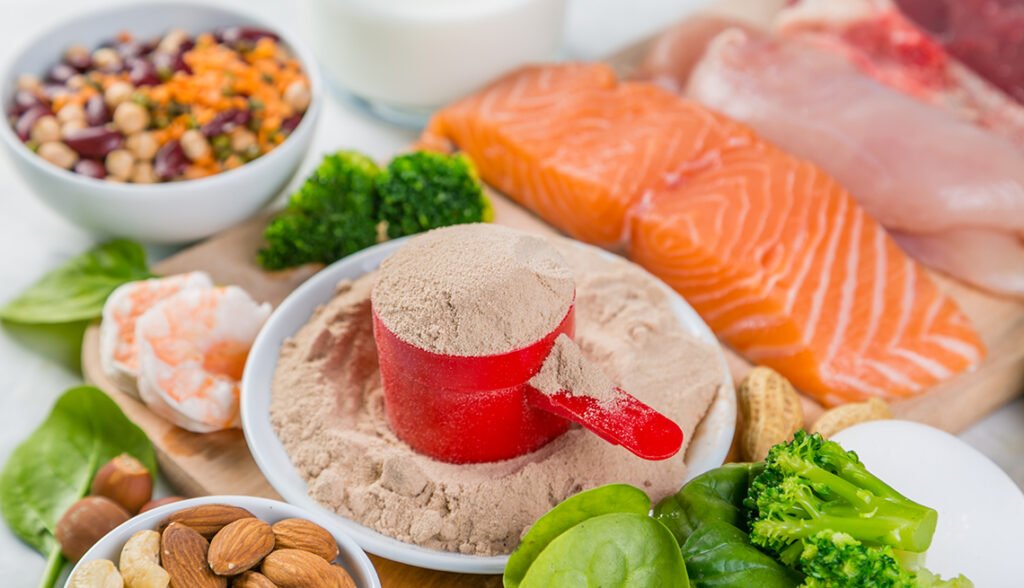
Top Plant-Based & Mixed Protein Sources
- Legumes (lentils, chickpeas, black beans, kidney beans): ~7–18 g protein per cooked cup, plus fiber and micronutrients.
- Soy foods (tofu, tempeh, edamame): Among the best plant proteins; complete amino acid profiles.
- Quinoa: A grain-like seed that is a complete plant protein.
- Nuts & seeds (almonds, peanuts, pumpkin seeds, hemp, chia): Concentrated protein plus healthy fats; small portions go a long way.
- Seitan (wheat gluten): High protein for those without gluten intolerance.
- Protein-fortified grains or cereals: These can help, but whole-food proteins are usually superior in nutrient balance.
By combining different plant proteins across meals (e.g. grains + legumes), vegetarians and vegans can meet all essential amino acid needs.
Estimating Your Protein Needs
General guidance (for healthy individuals):
- Sedentary adults: ~0.8 g of protein per kg of body weight.
- Moderately active or older adults: ~1.0 to 1.6 g/kg.
- Strength training or athletic goals: ~1.6 to 2.2 g/kg (sometimes even higher during intense training or negative energy balance).
Your optimal target depends on age, muscle mass, health conditions (like kidney disease), and lifestyle. Use these as starting points and adjust.
How to Structure Meals Around Protein
- Start with protein first. Plan your protein source (meat, beans, tofu) then build around it with vegetables, whole grains, and healthy fat.
- Distribute protein across meals. Rather than loading one meal, aim to include 20–30 g (or more) in each main meal if possible.
- Sneak protein into snacks. Choose portable, protein-rich snacks like boiled eggs, yogurt, cottage cheese, roasted chickpeas, edamame, nuts or seed mixes.
- Batch cook protein staples. Prepare grilled chicken, boiled eggs, cooked beans, baked tofu or tempeh in bulk to drop into meals quickly.
- Upgrade recipes. Add beans into soups, blend Greek yogurt into sauces, toss seeds or nuts into salads, stir protein powder into oatmeal or smoothies (if desired).
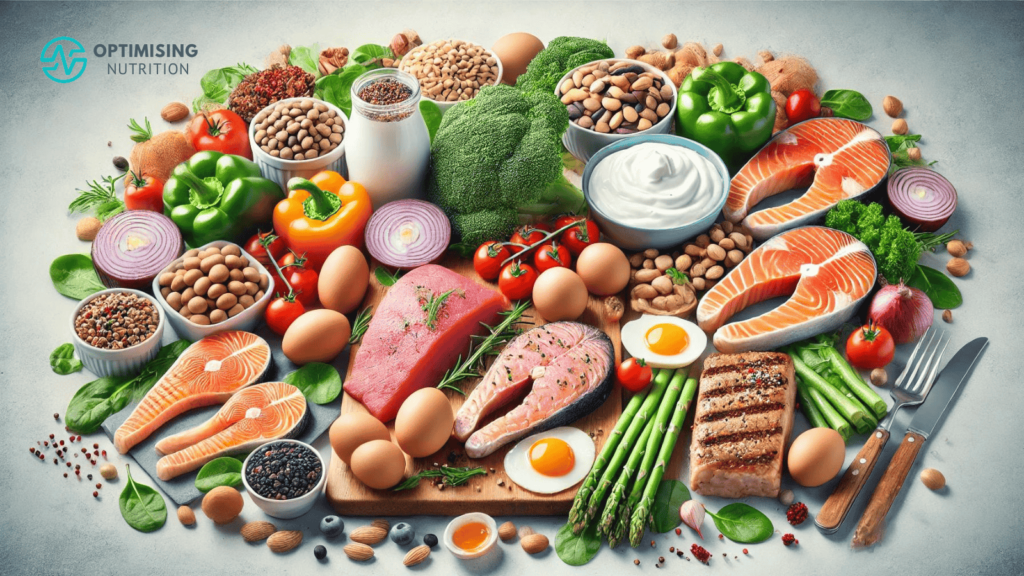
Sample High-Protein Meals & Ideas
- Breakfast: Greek yogurt with berries + a tablespoon of pumpkin seeds.
- Lunch bowl: Grilled chicken or tofu + mixed greens + cooked quinoa + veggies + light dressing.
- Dinner: Baked or grilled fish or lean meat + roasted vegetables + side of lentils or beans.
- Snack: Cottage cheese with fruit, a hard-boiled egg + carrot sticks, roasted chickpeas, or edamame.
- Smoothie: Milk or plant milk + a scoop of protein powder or silken tofu + banana + spinach.
These combinations often provide 20–40 g of protein per meal, depending on portion sizes.
Vegetarian & Vegan Strategies
- Use whole soy foods (tofu, tempeh, edamame) as main protein anchors.
- Rotate legumes (lentils, beans, peas) and grains (quinoa, farro) so you don’t get stuck eating the same thing.
- Combine plants across meals—e.g. rice + beans, hummus + whole-grain pita, nut butter + oatmeal—to cover all essential amino acids.
- Monitor B12 (often lacking in vegan diets) via fortified foods or supplements when needed.
- Pay attention to iron and zinc; plant sources are less bioavailable, so include vitamin C–rich foods to improve absorption.
- Use fortified plant milks and grains to aid in meeting micronutrient needs.
Protein Density, Calorie Balance & Heart Health
High-protein foods often come with variable fat, calories, or sodium. Some high-protein choices (processed meats, fatty cuts of meat, full-fat cheeses) may increase saturated fat or sodium intake. For those watching weight or heart health:
- Choose lean cuts of meat and skinless poultry.
- Prefer fish, especially fatty fish, which add omega-3s.
- Favor plant and legumes for protein bulk.
- Keep processed meats minimal.
- Pair proteins with plenty of vegetables and whole grains to create balance.
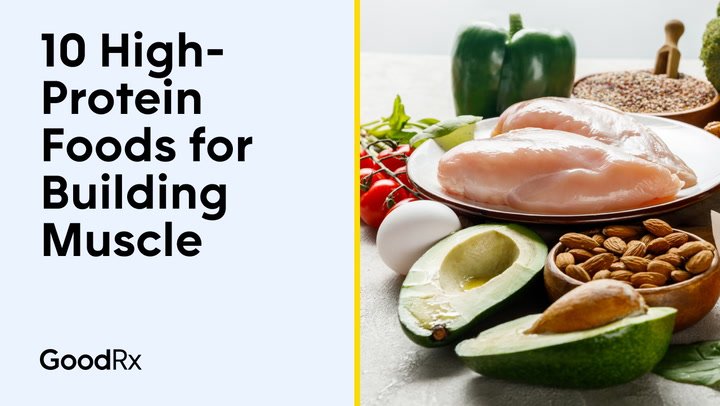
Safety & Special Conditions
- Kidney conditions: People with chronic kidney disease must monitor protein intake; too much can stress kidneys.
- Pregnancy, breastfeeding, illness, older age: Protein needs are generally higher; professional guidance is useful.
- Mercury in fish: Limit high-mercury fish (like some tuna) in groups sensitive to exposure (pregnant people, young children).
- Overreliance on supplements: Whole foods give you vitamins, minerals, fiber and more; use powders thoughtfully.
- Hydration & digestion: Increase water intake and fiber when raising protein, to assist kidneys and digestion.
Visual & Practical Portion Cues
- A palm-sized portion of cooked lean meat or fish often gives ~20–30 g protein.
- One large egg = ~6–7 g protein.
- 1 cup cooked lentils or beans = ~15–18 g protein (depending on type).
- 1 cup Greek yogurt (plain) = ~15–20 g (product dependent).
- Handful of nuts/seeds = ~5–8 g (varies by type).
These cues let you approximate protein without needing a scale or label every time.
One-Day Sample High-Protein Plan
| Meal | Food Items & Approx. Protein |
|---|---|
| Breakfast | Greek yogurt + sliced fruit + pumpkin seeds + one boiled egg (≈30 g) |
| Snack | Roasted edamame or handful of almonds (≈8–10 g) |
| Lunch | Tuna or tofu bowl over quinoa + mixed greens (≈30–35 g) |
| Snack | Cottage cheese with berries or carrot sticks + hummus (≈12–15 g) |
| Dinner | Grilled chicken or tempeh + roasted veggies + side lentils (≈35–40 g) |
Total daily protein: roughly 115–140 g, adaptable to your body size and goals.
Tips to Make It Work
- Plan protein first. When writing your shopping list or planning meals, pick your protein and build around it.
- Prep ahead. Cook batches of protein staples so you can assemble meals quickly.
- Rotate variety. Don’t eat the same protein every day—rotate meats, fish, legumes, nuts, seeds.
- Balance macros. Include vegetables, healthy fats, and fiber to support digestion, blood sugar, and micronutrients.
- Stay consistent. Small, daily habits are more sustainable than overambitious diets.
- Use protein-enriched or fortified options sparingly. Whole foods should remain the foundation.
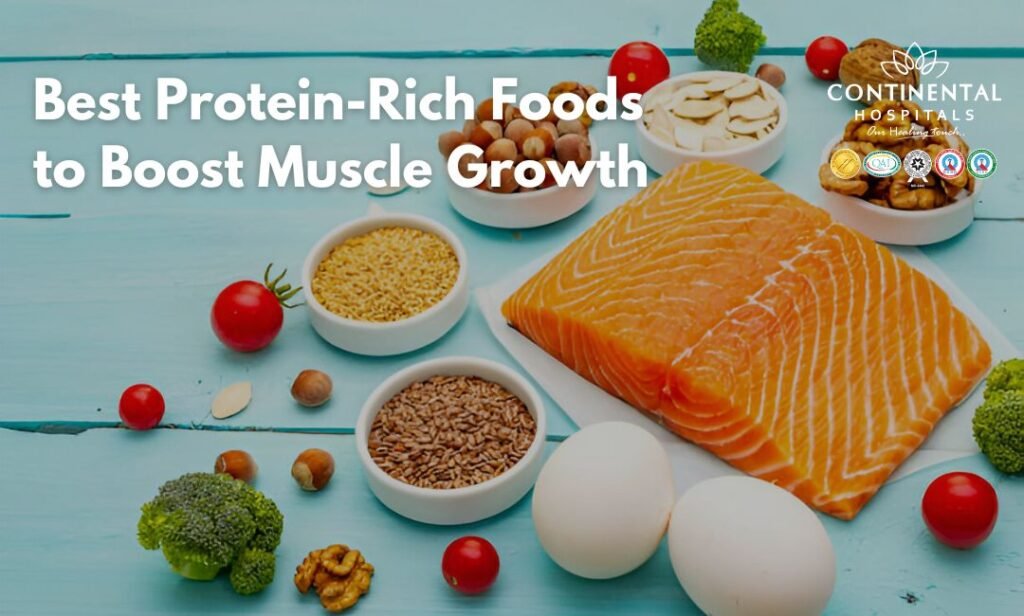
Common Myths & Pitfalls
- Myth: “More protein always means more muscle.” After a point, extra protein offers diminishing returns and may substitute for needed carbs, fats, or micronutrients.
- Pitfall: Relying on protein bars or shakes alone. They can supplement, but whole foods provide greater nutrient depth.
- Myth: “You must combine proteins in one meal to be complete.” In reality, as long as you eat varied proteins across the day, you can meet essential amino acid needs.
- Pitfall: Ignoring sodium, saturated fat or added sugars in processed “high-protein” foods. Read labels.
FAQs
How to add more high-protein foods to breakfast?
Start with Greek yogurt, eggs, cottage cheese or a scoop of protein powder. Add nuts, seeds, or beans (e.g. chickpeas) to boost protein further.
How to get high protein on a vegetarian or vegan diet?
Rely on soy products (tofu, tempeh, edamame), legumes, quinoa, nuts, seeds. Combine plant sources across meals to ensure all amino acids.
How to choose high-protein snacks that are healthy?
Pick minimally processed foods: boiled eggs, plain Greek yogurt, cottage cheese, roasted chickpeas, edamame, nut/seed mixes.
How to calculate how much protein I need per day?
Begin with body weight: ~0.8 g/kg for inactive adults, ~1.0–1.6 g/kg for active or older adults, ~1.6–2.2 g/kg for heavy training. Adjust for individual goals or health status.
How to balance high protein with heart health?
Favor lean proteins and plant sources, limit processed meats, reduce saturated fat, and include fiber, vegetables, and healthy fats in meals.
Read More: Chia Seeds: Nutrition, Benefits, Uses & Precautions
Conclusion
High-protein foods are powerful allies in building muscle, aiding recovery, controlling appetite, and supporting overall health. But success comes from choosing quality sources, balancing intake, and fitting them into your lifestyle—not from chasing high grams alone. Focus on whole foods: lean meats, fish, eggs, dairy, legumes, soy, nuts and seeds. Spread protein across meals, use simple visual portion cues, and build around a protein anchor in every meal. For vegetarians and vegans, variety and protein combinations across the day ensure full amino acid coverage.
Be mindful of health conditions, exercise needs, and nutritional balance. With consistent, practical adjustments, you can meet your protein goals and support strength, wellness, and vitality over the long term.